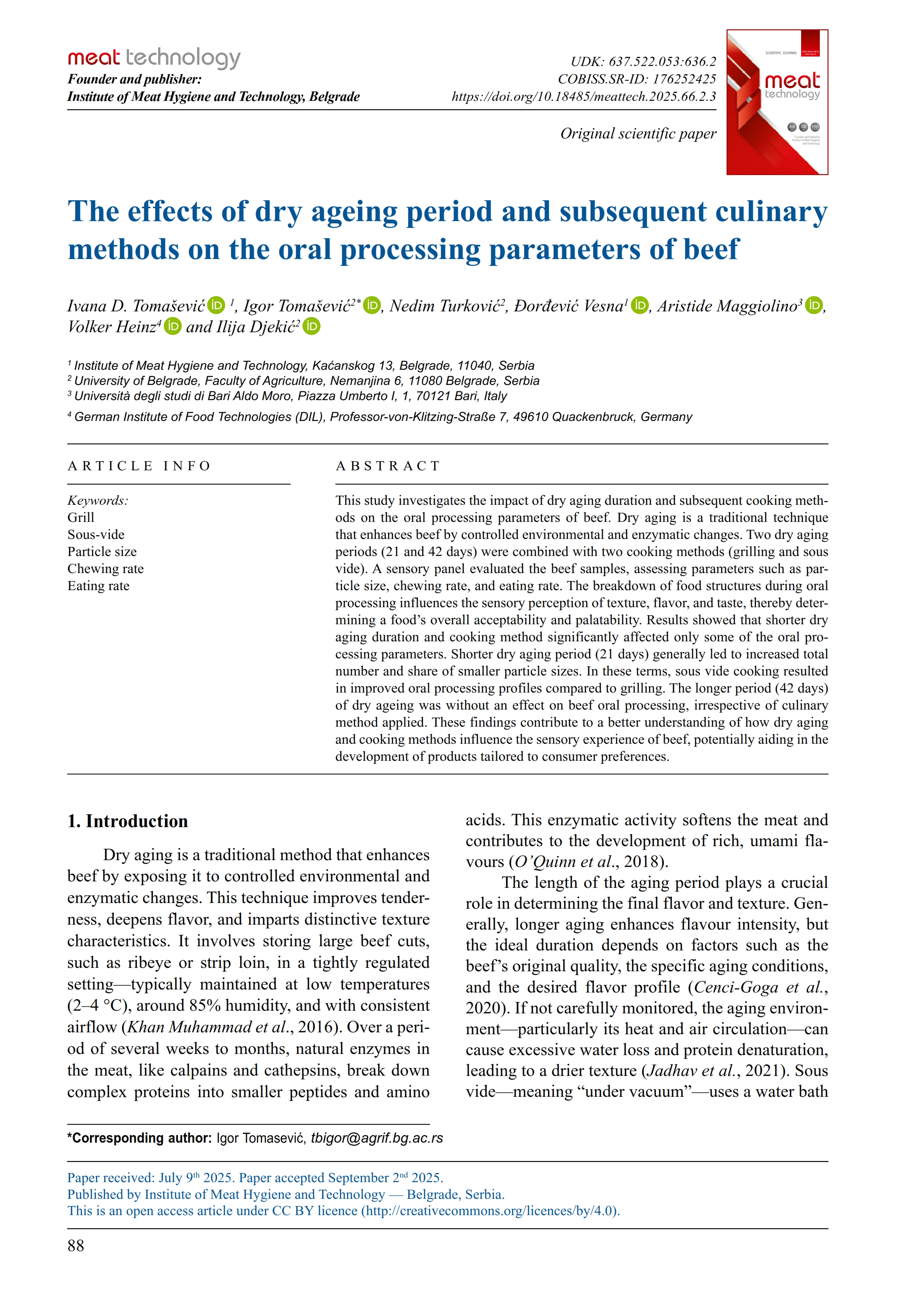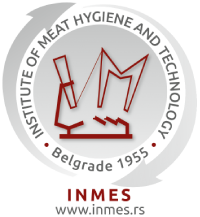The effects of dry ageing period and subsequent culinary methods on the oral processing parameters of beef
Abstract
This study investigates the impact of dry aging duration and subsequent cooking methods on the oral processing parameters of beef. Dry aging is a traditional technique that enhances beef by controlled environmental and enzymatic changes. Two dry aging periods (21 and 42 days) were combined with two cooking methods (grilling and sous vide). A sensory panel evaluated the beef samples, assessing parameters such as particle size, chewing rate, and eating rate. The breakdown of food structures during oral processing influences the sensory perception of texture, flavor, and taste, thereby determining a food's overall acceptability and palatability. Results showed that dry aging duration and cooking method significantly affected oral processing parameters. Shorter dry aging period (21 days) generally led to increased total number and share of smaller particle sizes. In these terms, sous vide cooking resulted in improved oral processing profiles compared to grilling. Longer period (42 days) of dry ageing was without an effect on beef oral processing irrespective of culinary method applied. These findings contribute to a better understanding of how dry aging and cooking methods influence the sensory experience of beef, potentially aiding in the development of products tailored to consumer preferences.





